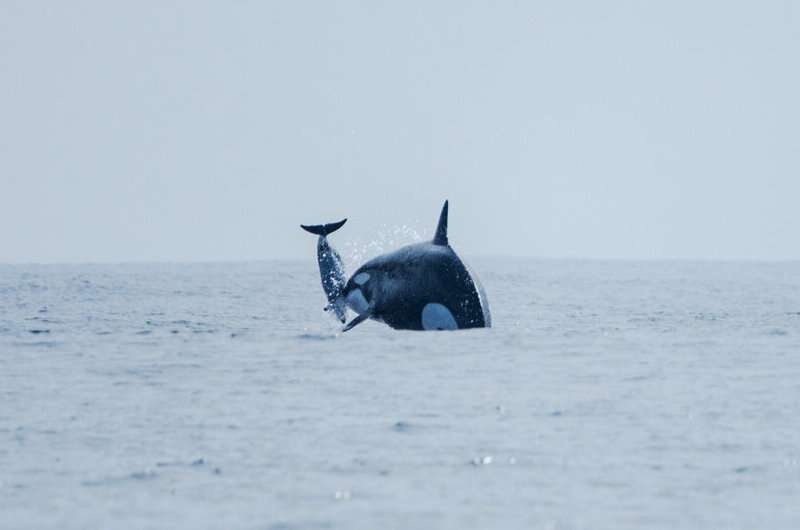Off the coast of Chile, a team of scientists has uncovered the secrets of an elusive population of orcas, revealing their remarkable hunting skills and shedding light on the ecological dynamics of the Humboldt Current system.

Citizen Science Meets Orca Hunting
The study began with a collaboration between scientists and citizen scientists, who have been closely observing these orcas for years. Through their combined efforts, the researchers have been able to uncover the orcas’ hunting behaviors, which were previously unknown.
The team, led by Dr. Ana García Cegarra from the Universidad de Antofagasta , has been studying the orcas’ feeding habits, noting that they have been using fishing boats to help them capture sea lions. However, the latest discovery is even more remarkable – the researchers have now witnessed the orcas successfully hunting dusky dolphins, a prey that has never been reported for this population before.
This new evidence about their eating habits is a significant step forward in understanding the role these orcas play in the marine ecosystem of the Humboldt Current. By studying their feeding preferences and behaviors, the researchers hope to gain insights into how different orca populations in the southern hemisphere are connected, which could inform conservation efforts for this poorly-known species.
Unraveling the Orcas’ Ecotype
Orcas are known to have diverse diets, and different populations can be classified into distinct ecotypes based on their preferred prey, acoustics, and genetics. The orcas in the Humboldt Current region have been a mystery, as they have not been easily categorized into the known ecotypes found in the southern hemisphere.
The new observations of the orcas hunting dusky dolphins suggest that they may belong to the mammal-hunting Type A ecotype. This hypothesis is further supported by the small pod sizes and the prey they have been observed targeting. However, the researchers note that the orcas’ white eye patches are smaller than what is typically seen in Type A orcas, and they have never been recorded in the Patagonia region with other Type A orcas.
Without genetic data, the researchers are limited in their ability to definitively classify the Humboldt orcas. They emphasize the need for further study, including the collection of skin biopsy samples, to better understand the genetic and ecological relationships between this population and the other orca ecotypes found in the southern hemisphere.
Conclusion
The discovery of the Humboldt orcas‘ hunting habits and their potential classification as a new ecotype is a significant step forward in understanding the complex and interconnected world of orca populations. By continuing to study these elusive predators, scientists can unravel the secrets of the Humboldt Current system and contribute to the broader conservation efforts for this iconic marine species.
